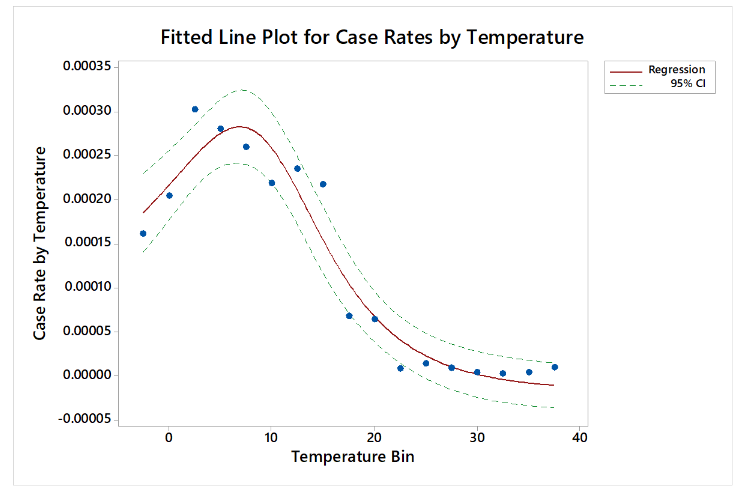In a new paper, Colorado researchers look at the possibility of a correlation between Covid and air temperature.
Looking at WHO case reports and building statistical models, they find
significant reduction of case rates with mean maximum temperature above approximately 22.5 C or 72.5 F
In the figure below the x-axis shows the mean temperature while the red bars show case count vs the dashed line which shows total population in that mean temperature bin

A fitted model is depicted below showing temperature vs case right

Their final statement
These conclusions do not confirm that COVID-19 cannot survive or transmit in warm and humid temperatures or establish a casual connection between temperature and transmission. However,the clear correlation between variables provides support for further study of SARS-CoV-2 and COVID-19 under various environmental conditions. With respect to countermeasures,the southern hemisphere should also expect increased case rates as that region moves from summer into fall and winter.
Some commenters weren’t convinced. One comment I found said
I’m a climate researcher working with others on the connection between COVID-19 transmissibility and temperature, and I don’t think this study even reaches the bar of providing “evidence,” unfortunately.
When estimating the effect of temperature, one most first control for other factors that affect disease spread, including: population distribution and density, mobility from regions with active spread, testing availability, public health interventions (i.e. lockdowns), and other societal or environmental factors. Even if there’s a temperature effect, it’s likely that several of the factors I just mentioned will still be more salient. If you don’t account for these, then you’re more than likely catching one of these confounding variables.
This study fails to account for any of the factors I just listed, except for population distribution. Given that factors like testing availability, early travel from China, and public health interventions also have correlations with latitude/temperature, these authors are really reaching to draw any conclusions given their methods.
Regardless, as the southern hemisphere moves into winter and the northern moves into summer, the reality should become apparent.
